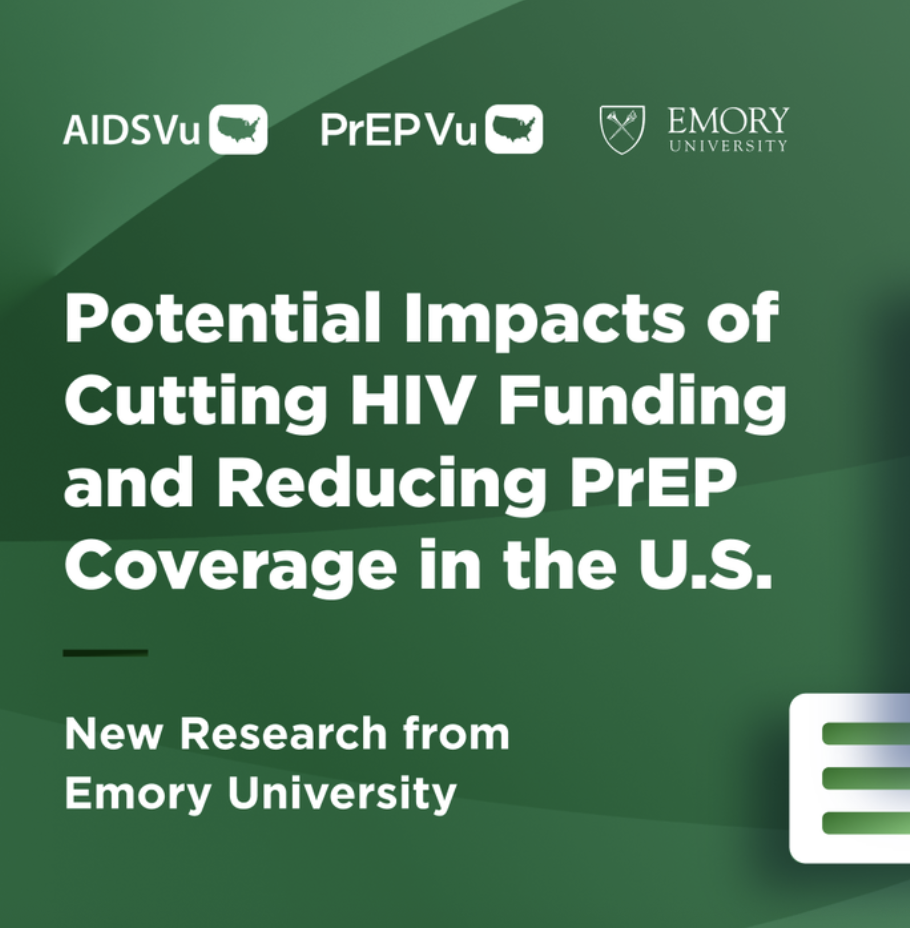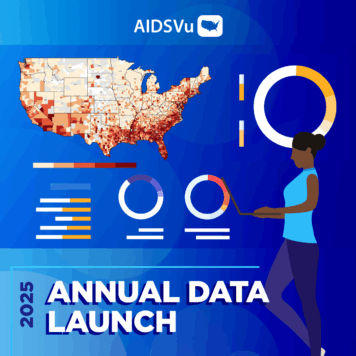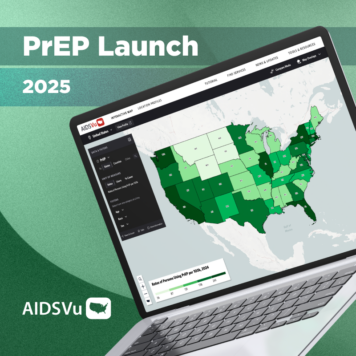Bisola Ojikutu, MD, MPH, is an Adjunct Faculty member at The Fenway Institute at Fenway Health. She is also an Assistant Professor of Medicine at Harvard Medical School; an Associate Physician, Division of Global Health Equity at Brigham and Women’s Hospital; and an Infectious Disease Physician at Massachusetts General Hospital.
Q: You have dedicated your career to HIV/AIDS research and caring for patients as a physician. What drives you to do what you do, and how do you balance between your research and being a physician?
Health disparities, especially racial and ethnic disparities in the HIV epidemic across the U.S., are striking. There are also significant disparities among sexual minorities. For me, overcoming these disparities in health and creating equity, in general, have been the driving forces behind my career, and keeps me going each day. I became a physician and a researcher because working with my patients informs the research I do. It tells me where to look for questions. It gives me a new perspective on the challenges that people are facing. In many cases, questions related to my patients’ concerns and challenges end up being the specific aims of my research studies.
Q: You recently presented a poster at the International AIDS Conference in Amsterdam: “Is availability of clinics that prescribe PrEP associated with greater willingness to use it? Results from the national survey on HIV in the Black community (NSHBC).” Can you tell us about the poster’s key findings, your work on this topic, and how you used AIDSVu in your research?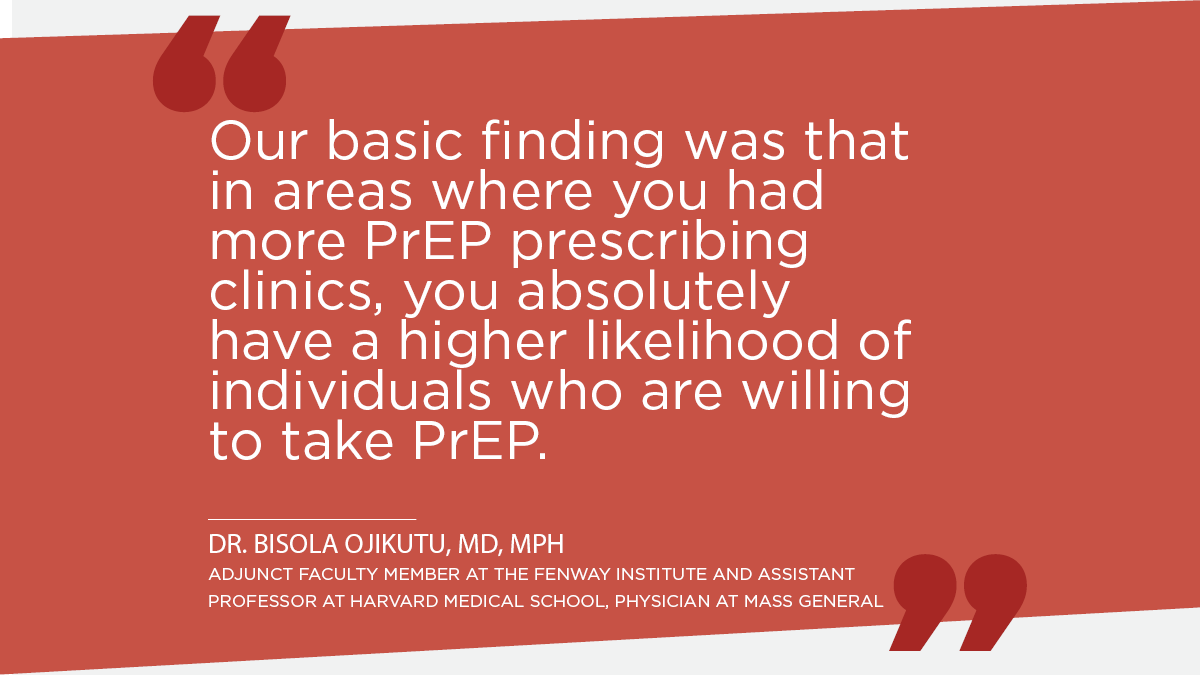
Many people travel a significant distance to access health care, whether it be for antiretroviral therapy or pre-exposure prophylaxis (PrEP). In my practice, I often receive referrals for patients who are at risk for HIV from primary care providers who are aware of PrEP, but who aren’t prescribing it. In some cases, this leads to increased patient travel time (to see another doctor who is prescribing PrEP). For this study, we wanted to know if there was an association between proximity to PrEP prescribing clinics and willingness to use it.
We used individual-level data from a survey that we administered, The 2016 National Survey on HIV in the Black Community (NSHBC), as well as data on PrEP locations that are conveniently available on AIDSVu, to conduct multi-level modeling to determine the relationship between PrEP willingness and density of PrEP prescribing clinics. We also looked at travel time and found that more than 40% of our participants would need to drive more than one hour to access PrEP—and the majority of our participants were in urban areas. So, even in places where you wouldn’t expect to travel far to gain access to a service that should be readily available, many still had to. We would like to explore this in more detail, including rural participants with even longer drive times, but our basic finding was that in areas where you had more PrEP prescribing clinics, you absolutely have a higher likelihood of individuals who are willing to take PrEP.
Q: What are the differences in individual-level barriers and structural barriers to accessing PrEP and why are they important when it comes to uptake of PrEP? How do we start to solve for these barriers, particularly among Black Americans?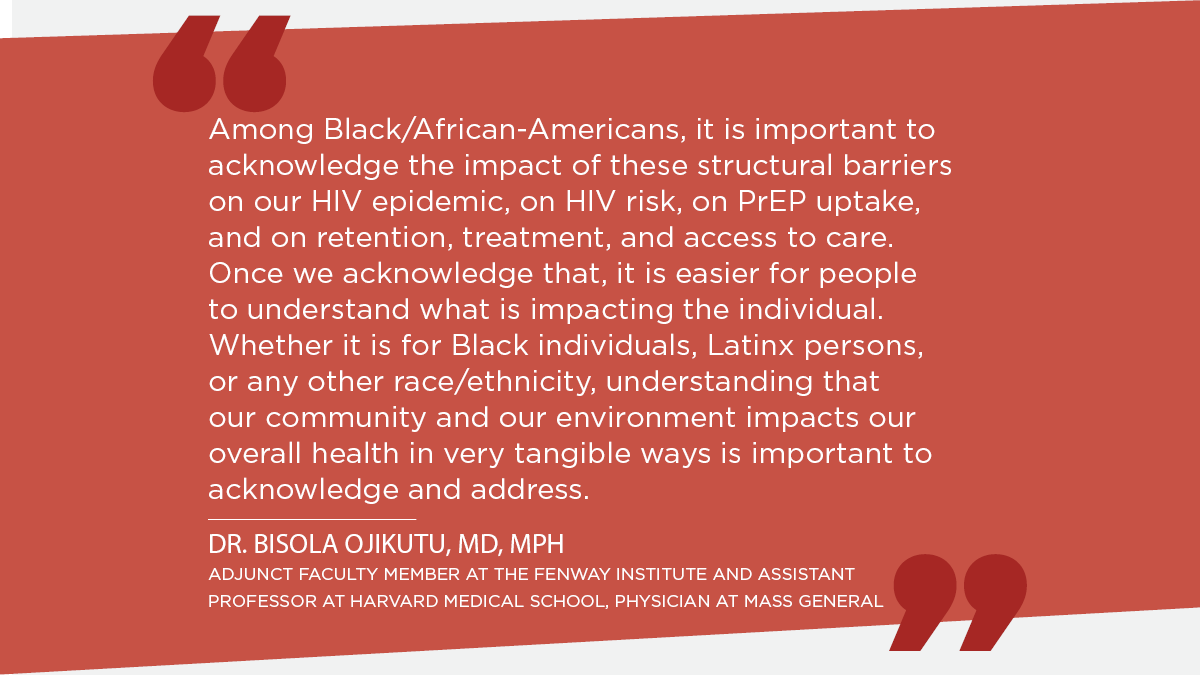
Individual-level barriers are personal in nature, such as one’s own income level and insurance status. A number of studies, including one of our own that was recently published, have explored the many individual-level barriers to PrEP use. These include not being aware of PrEP, low perceived risk of contracting HIV, internal and external stigma, socio-economic status, lack of a primary care provider, mistrust of the efficacy of the PrEP medication, and a desire for non-daily medication option.
Overall, individual-level barriers—although they may stem from larger experiences that are common to a community or structural in nature—are specific to the individual. We define structural barriers as the aspects, environment, or community that affect our behavior but are largely out of our control. For example, if you live in a community that overall has a lower socioeconomic status, issues regarding PrEP prescription, access to PrEP, whether there are PrEP prescribers in a particular area, may be out of your control.
Among Black/African-Americans, it is important to acknowledge the impact of these structural barriers on our HIV epidemic, on HIV risk, on PrEP uptake, and on retention, treatment, and access to care. Once we acknowledge that, it is easier for people to understand what is impacting the individual. Whether it is for Black individuals, Latinx persons, or any other race/ethnicity, understanding that our community and our environment impacts our overall health in very tangible ways is important to acknowledge and address.
Q: You also presented another poster at the same conference on “Area-level poverty and low willingness to use PrEP among Black individuals in the U.S. South.” Can you tell us about that poster’s key findings and your work on this topic?
The purpose of that study was to determine the association between a number of structural factors and willingness to use PrEP. We used individual-level data that we collected from the NSHBC on willingness to use PrEP, as well as data on the rate of new HIV diagnoses nationally and social determinants of health—including poverty and inequality—which are available on AIDSVu, making it very easy for us to access. We found that participants in areas with higher rates of new HIV diagnoses were more willing to use PrEP, and we were able to put that into models with other structural factors. We found that people in areas with higher poverty were actually less willing to use PrEP. Why does that association exist? We aren’t sure. But we are working on additional analyses to understand this association.
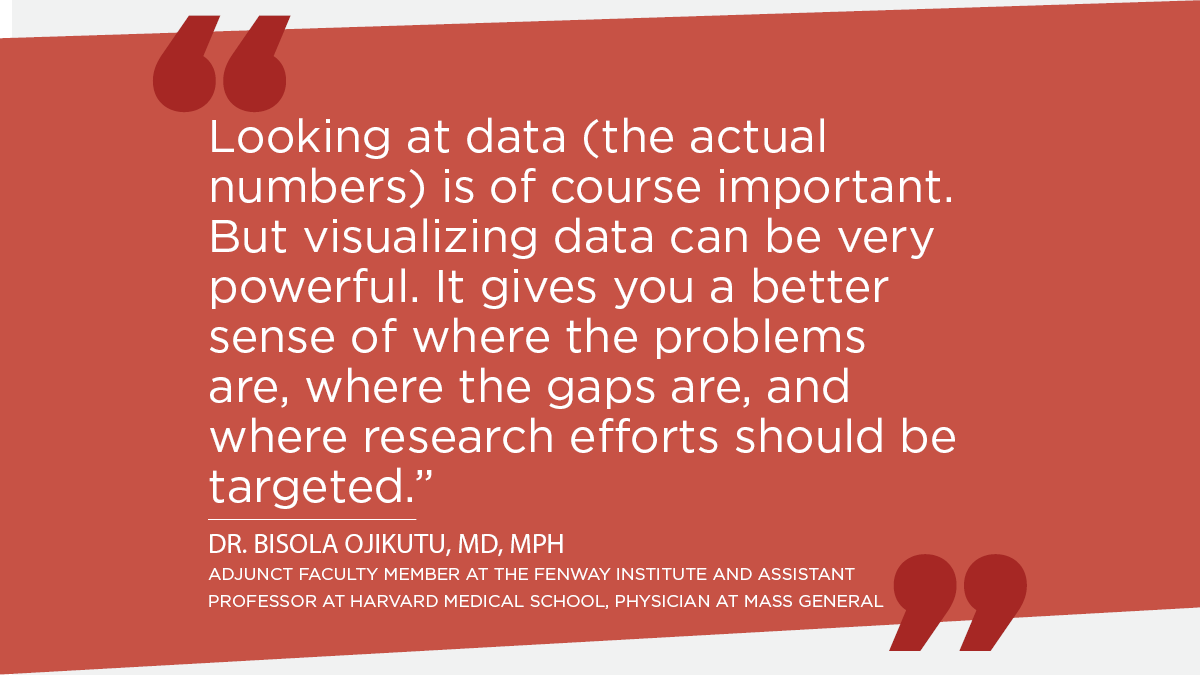 Q: How can AIDSVu’s interactive maps of PrEP use help increase awareness of the disparity between PrEP use and PrEP need?
Q: How can AIDSVu’s interactive maps of PrEP use help increase awareness of the disparity between PrEP use and PrEP need?
Looking at data (the actual numbers) is of course important. But visualizing data can be very powerful. It gives you a better sense of where the problems are, where the gaps are, and where research efforts should be targeted. If you look at data in the South, for instance, it is very clear there’s less PrEP uptake by age, sex, and gender. Visualizing that data on a map helps to better understand what questions you need to ask next. This is important when you are writing grants and presenting data. Being able to show that the questions you ask are targeted to the right areas really helps people who have to make funding and programmatic decisions.

